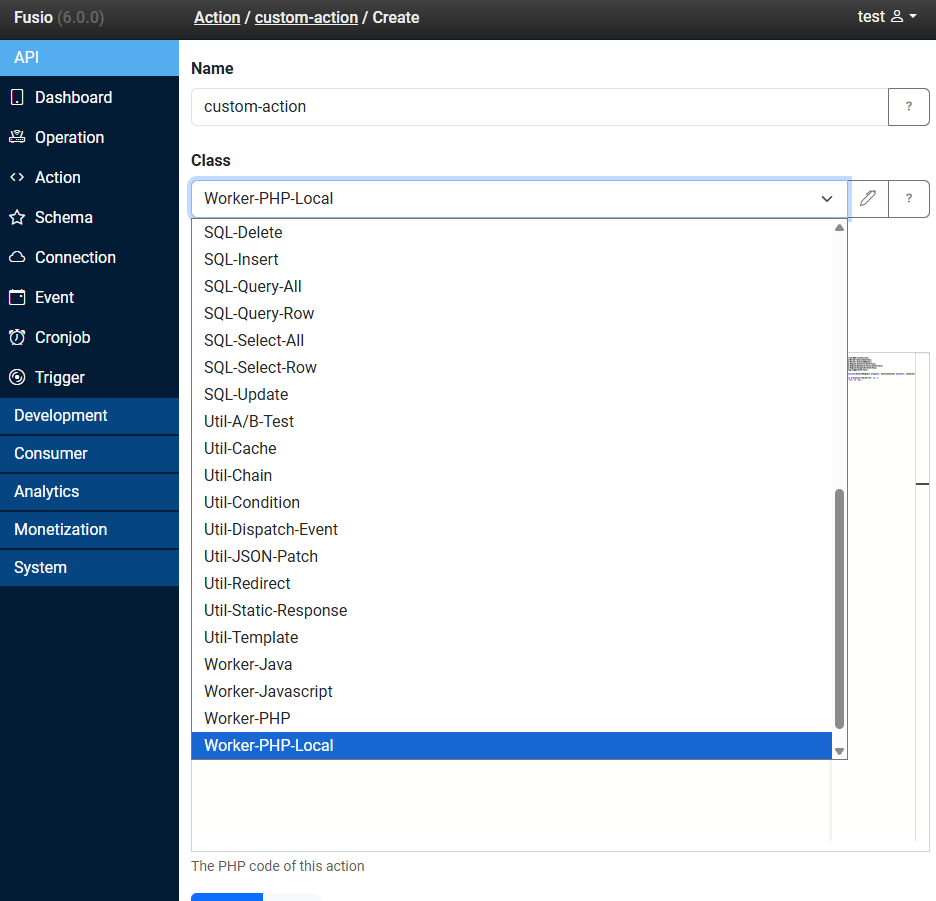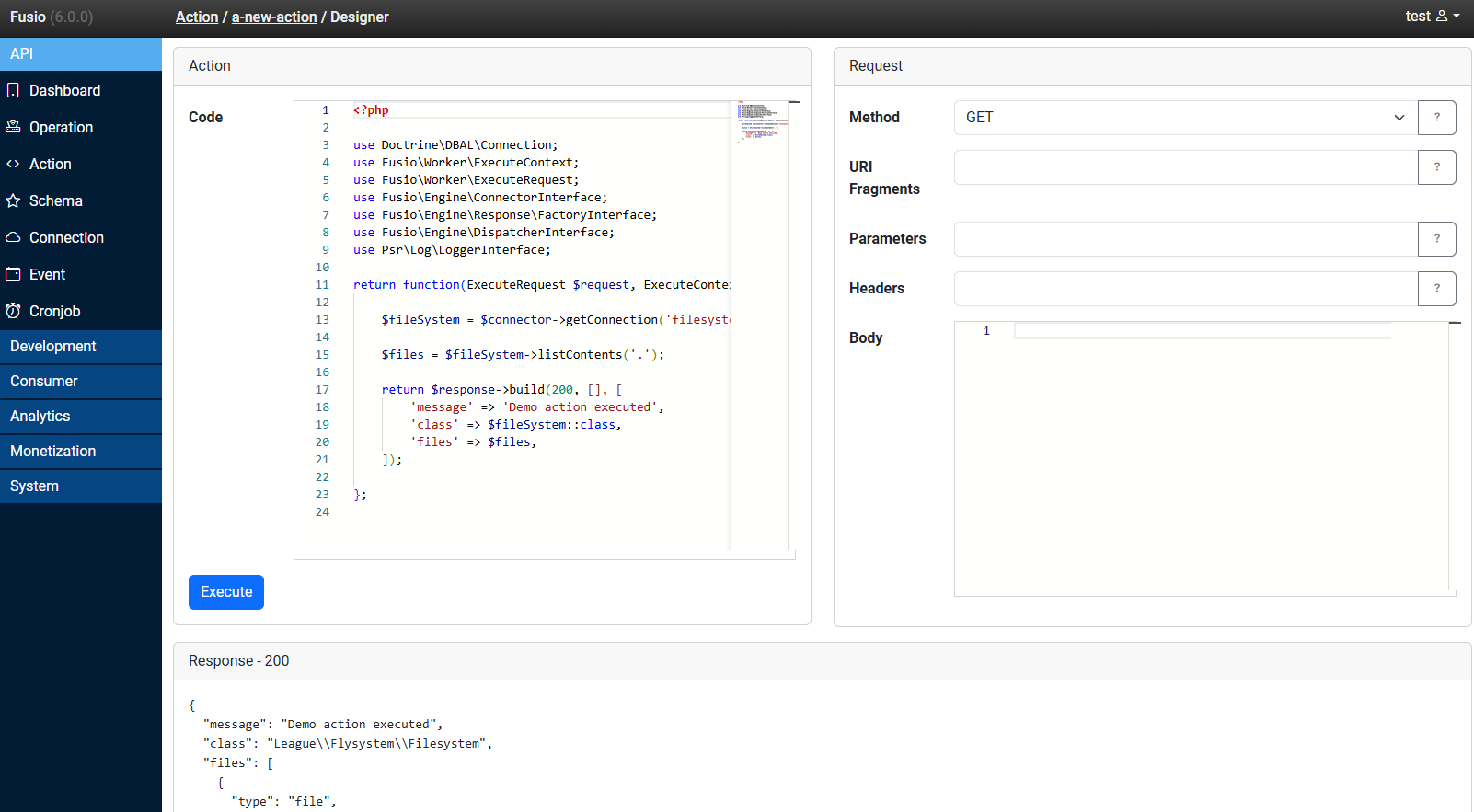Action
An action contains the business logic to handle a request and produce a response. Fusio contains already many actions for common tasks i.e. to execute database operations or push data to a message queue.
Configuration

Name
The name of the action.
Class
The action class. Besides selecting an action you can also enter a custom action class by using the edit button.
Async
It is possible to execute an action in async mode which means that the action directly returns a 202 accepted response and the request gets executed later on in the background.
Config
All other input fields are action specific.
Designer
Through the action designer it is possible to adjust and execute an action, this helps to quickly develop and test an action. You can find the action designer through the terminal icon right after the edit button at the action list.

Development
To develop a custom action you need to create a class which implements the class Fusio\Engine\ActionAbstract.
Through this it is possible to select this action at the backend. Beside selecting an action you can also click on the
edit button to manually enter a class name.
In the following an example action:
<?php
namespace App\Action;
use Fusio\Engine\ActionAbstract;
use Fusio\Engine\ContextInterface;
use Fusio\Engine\ParametersInterface;
use Fusio\Engine\RequestInterface;
class HelloWorld extends ActionAbstract
{
public function handle(RequestInterface $request, ParametersInterface $configuration, ContextInterface $context): mixed
{
return $this->response->build(200, [], [
'hello' => 'world'
]);
}
}
If you add a constructor to your action Fusio will try to resolve the dependencies based on the DI container. More information about developing an custom action at our develop custom action page.